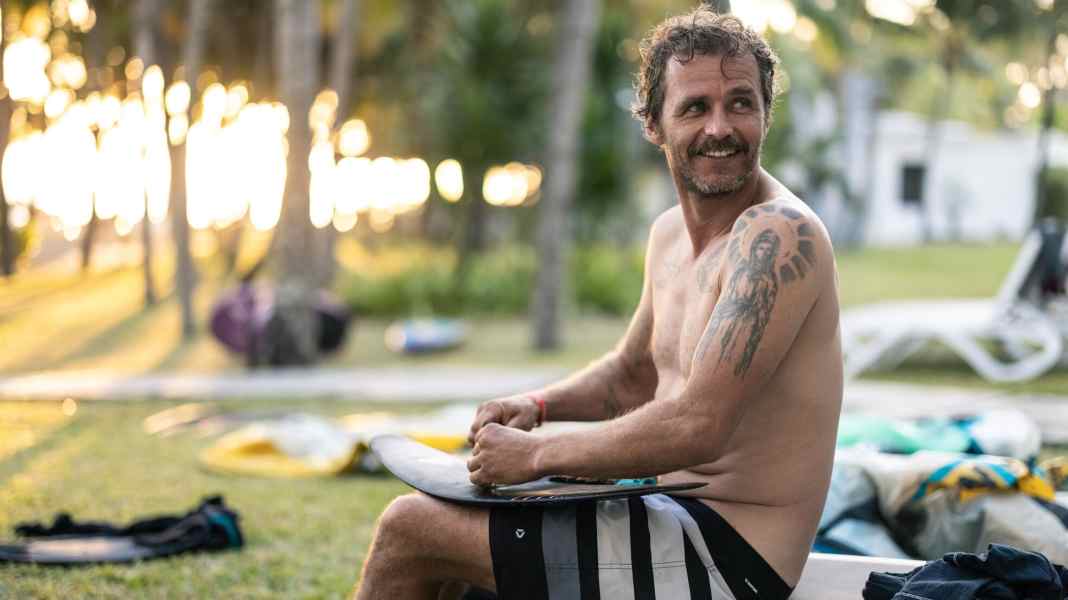
Henning Nockel is not only one of the best German wingsurfers in wave and freestyle, but is also involved in testing and development work at Fanatic and Duotone. We asked him what wingfoilers who want to get into waves and freestyle should consider when choosing the right foil.
Henning, foils open up a whole new dimension and allow you to ride even mini waves for a long time. The question of which foils to use for this is often asked by wave beginners. What should you generally bear in mind?
Anyone who has ridden down a wave on a foil is quickly fascinated. Sometimes it doesn't look so spectacular from the outside, but the energy of the wave becomes clear on the foil in a fascinating way. Even if the industry doesn't like to hear it, I always recommend using the same foil to get started that you use on flat water.
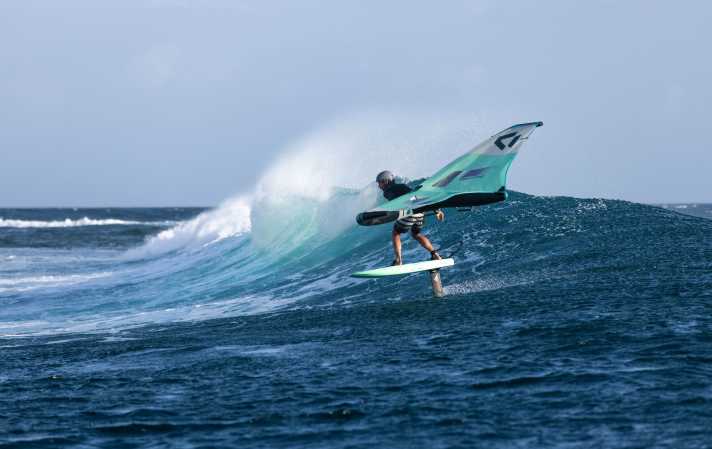
That sounds as if every foil is also suitable for the wave?
Of course there are big differences. But if you weigh 95 kilos, mostly wing at the lake inland and ride a thick 1800 front wing, then use it in the waves first, even if everyone tells you that the wing is far too big. Instead of buying a radical small foil set, find a spot with conditions that suit you, preferably with round waves. Control is also key in the waves.
On the market, a distinction is generally made between high-aspect foils (= large wingspan in relation to surface area) and low-aspect foils (= small wingspan in relation to surface area). What are the strengths and weaknesses of the different types of foil?
Generally speaking, the transitions are fluid, but to generalise, it can be said that high-aspect foils have a better glide due to their wingspan. This means that they continue to fly at a good speed even in unpressurised waves or very round sections. So if you are primarily travelling to spots where you have small, unpressurised swells, this may be just the thing for you. Low-aspect foils are usually more manoeuvrable and agile due to their small wingspan, allowing you to fly tighter radii. This is often also due to the fact that the wingtips are slightly higher than the fuselage, allowing the foil to roll better around its longitudinal axis.
If you want to hit the waves, take the foil you feel comfortable with
In your eyes, what are the downsides of the two types of foil?
As I said, both have their justification, depending on what you expect from foils for the wave. Wings with a larger span are of course limited in terms of radius, so you're more likely to surf wide arcs, which can also be great. In slow-moving waves, it can happen that you ride away from the wave if you just ride straight down into the wave trough. You therefore have to make some distance and keep to the back of the wave by making turns.
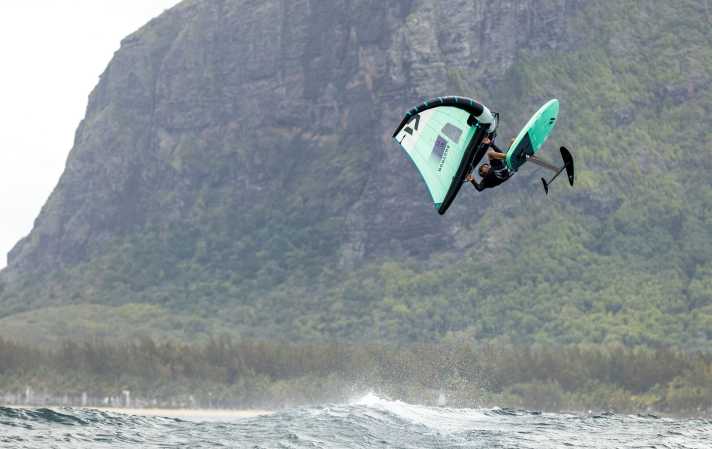
What influence does the length of the fuselage have on the driving characteristics?
In general, the setup becomes more manoeuvrable if you use a shorter fuselage. But here too, I warn against going too short, because a shorter fuse also makes the foil more demanding. And if you lie in the water for half the session, you won't get any better. I rode a 60 centimetre short fuse for a while, but then switched back to the longer 68. I lost some turning ability as a result, but the turns are simply more controlled and smooth. That's also what I want from my wave riding - it should look smooth and fluid. It's the same with the board: A lot of people think that if they want to get into waves, they need a tiny little board. That's a mistake. In the wave, you need to be able to take off again quickly after a crash, so take a board with enough volume and a foil that's not too small.
Which foil size makes sense in the wave?
Of course, this depends extremely on your weight, ability, foil type and wind strength. As I said, take the foil size that you would also use on flat water in this wind. For me, weighing just over 70 kilos, this is often a front wing with a surface area of 800 cm2. If you are heavier, the wing must of course be larger, even with an 1800 front wing you can start in the waves.
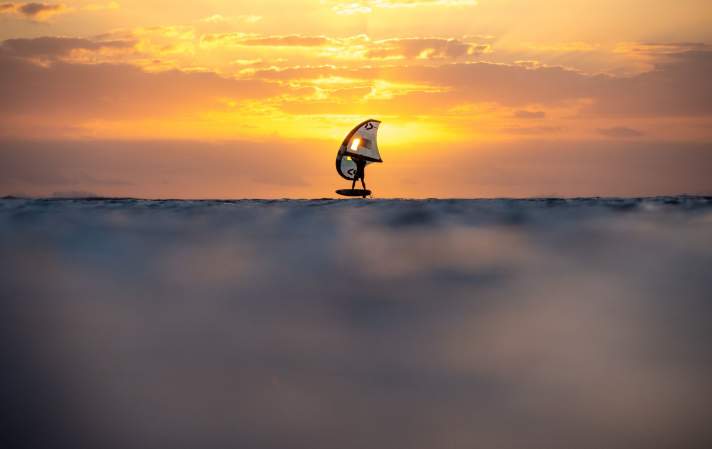
Nevertheless, the size of the front wing can also be a limiting factor, right?
Ultimately, it's always about speed and control. If the wave becomes powerful, a large front wing will eventually reach its speed limit, then the foil rises and you can no longer control it. The bigger and more powerful the wave becomes, the smaller the front wing needs to be. Small wings are simply faster. But you shouldn't make the mistake of choosing front wings that are too small and thin, because every riding mistake will then be penalised with a crash. There is also a risk that you won't be able to get back on the foil after a crash.
At this point, you will find external content that complements the article. You can display and hide it with a click.
Your final tip for all wave beginners?
Start with a foil that you feel comfortable on. Find a spot that is moderate. When you feel confident in the wave, start upgrading individual components of your foil - e.g. via a faster front or backwing, or a slightly shorter fuselage.
Do you also use the same foil for freestyling?
Yes, in principle I don't differentiate between the two. I want to feel comfortable here too and not constantly change the setup. That's what I ride in all conditions.
Freestyle in particular involves extremely small wings, right?
At professional level, this is true; many pros ride front wings with a surface area of only 600 cm2. The rule here is: the smaller, the faster. And if you want to do a backflip or 720s from flat water, you naturally need speed and height. However, it's a fine line and in the end, as a "normal" wingsurfer, you will learn many moves faster if you have more attempts. So if you spend half the session standing around because the foil or board is too small, you're on the wrong track. There are hardly any restrictions for freestyle moves such as 360s anyway. You can also learn a 360 with an 1800 foil.
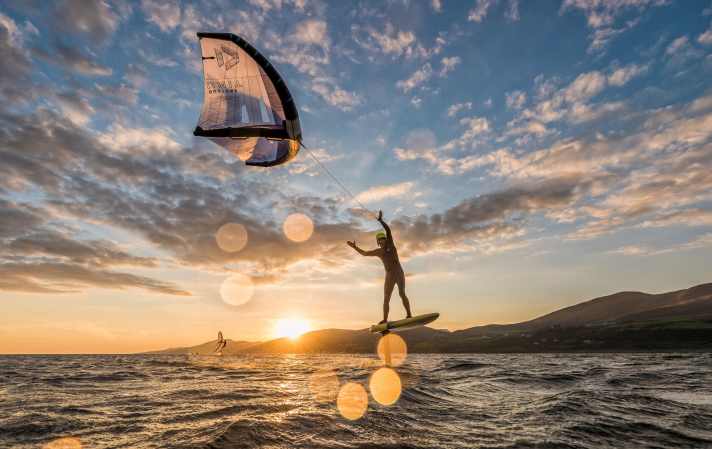
When it comes to speed and jump height, small front wings have certain advantages. What about classic foil manoeuvres such as foil 360s and other manoeuvres?
In general, I can also do all foil manoeuvres with an 800 front wing. Foil 360s, back riding, duck jibes and so on, all of which are also possible with a small wing. The difference is that this all happens at more speed and riding errors are penalised more quickly. In addition, it is of course more difficult to get back into the air after every fall. So all in all, I would say that all foil manoeuvres are possible with small foils, but the riding ability has to be higher. That's why I don't think much of suggesting to other wing riders that they have to ride certain wing sizes for jumping and freestyle. If you live on the coast and have 15 knots or more three times a week, you can ride front wings under 1200 cm2 well. You won't win a flower pot inland because you won't be able to get up with a 6-wing.
Thank you Henning for the interview!
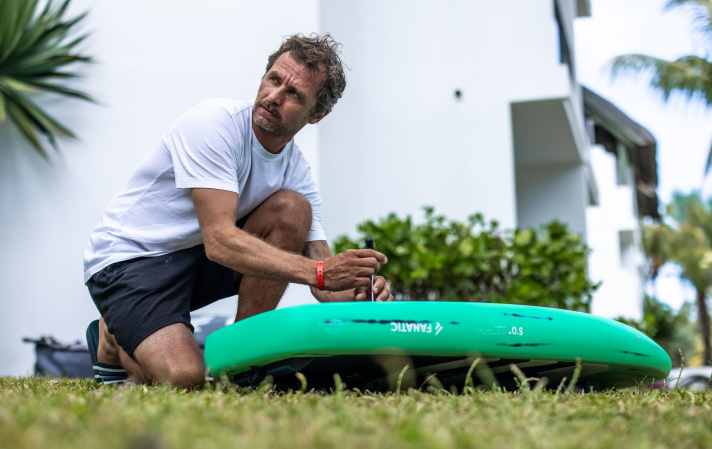
WING Tip: Visit Henning Nockel's YouTube channel

